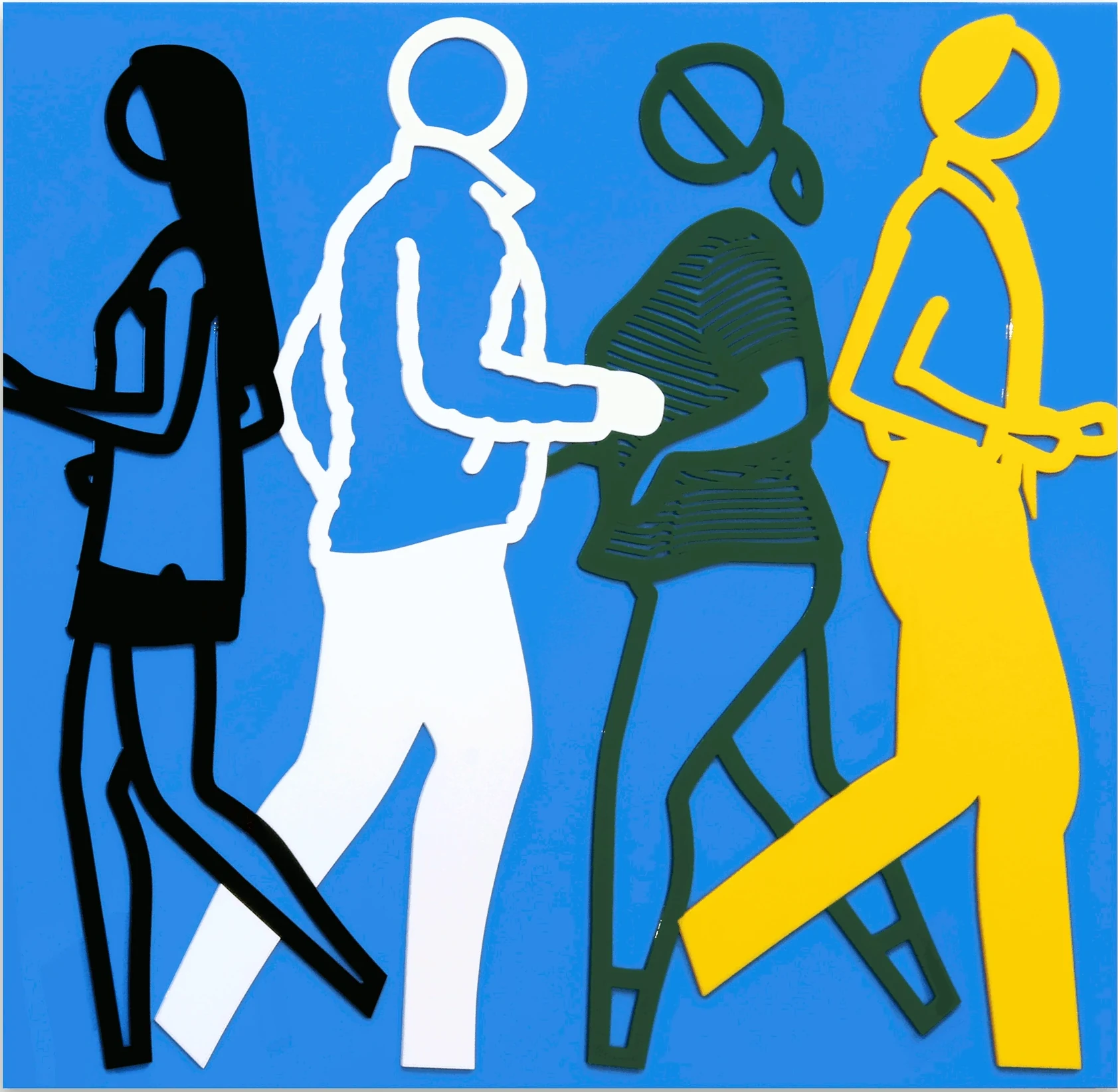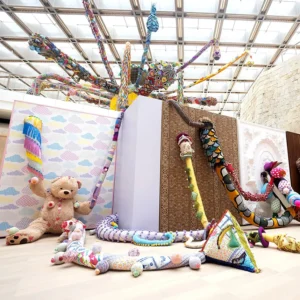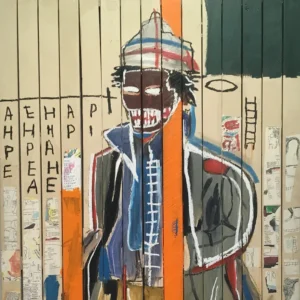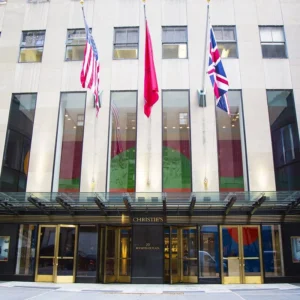Julian Opie’s art delves into the convergence of the human form, contemporary experience, and technology. He skillfully simplifies and distorts images across various mediums, including drawings, paintings, sculptures, and LED animations.
Opie’s fascination with movement challenges traditional artistic norms. Reminiscent of pop art, his works, primarily minimalistic black line drawings, feature portraits and animated figures, exploring themes of art history.
To understand how digital media intersects with Opie’s work, see What is Digital Art?, which explores the impact of digital spaces on contemporary art.
Early Influences and Artistic Evolution
Julian Opie, born in 1958, embarked on a journey that showcased his versatility and evolution over the years. His early influences, such as Egon Schiele and Japanese woodcut prints, significantly shaped Opie’s artistic perspective. His admiration for Raymond Carver’s short stories underscored his desire to imbue a sense of reality into his work.
Opie’s illustrious career is marked by an early recognition in the 1980s British art scene, emerging from the New British Sculpture movement, with notable participation in exhibitions like “The Sculpture Show” at Hayward and Serpentine Galleries in 1983.
His international presence expanded through exhibitions such as Documenta 8 in 1987, and he had a key presence in “The British Art Show” in 1990. The 1990s showcased his diverse exploration of themes and mediums, from traditional sculpture to contemporary drawing, exemplified by exhibitions like “Cityscape” in 1995 and “Thinking Aloud” in 1998.
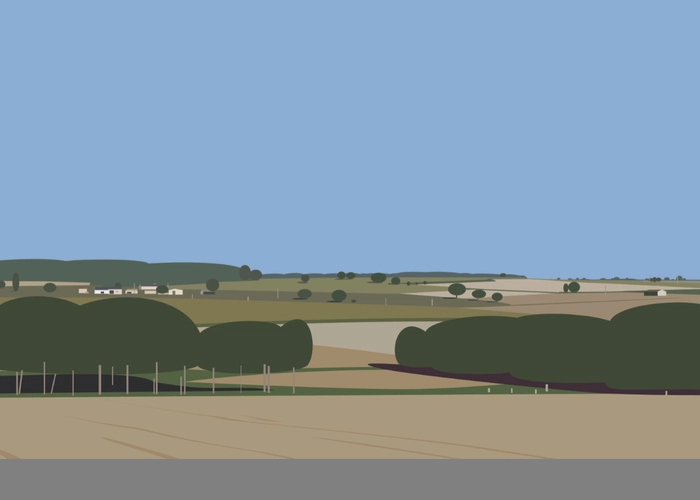
Opie’s extensive exhibition history spans the United Kingdom and international venues, including prominent museum showcases at Kunstverein in Cologne, Hayward Gallery, ICA in London, Lehnbachhaus in Munich, K21 in Dusseldorf, MAK in Vienna, Mito Tower in Japan, CAC in Malaga, IVAM in Valencia, MoCAK in Krakow, Tidehalle in Helsinki, Fosun Foundation in Shanghai, Suwon IPark Museum of Art in Korea, as well as participation in the Delhi Triennial, and Venice Biennial.
His work is represented by 12 galleries globally, and he has undertaken numerous public projects worldwide. Notable installations include those in the Dentsu Building in Tokyo (2002), City Hall Park in New York (2004), Mori Building at Omotesando Hill in Japan (2006), the River Vltava in Prague (2007), Phoenix Art Museum in the USA (2007), Dublin City Gallery in Ireland (2008), Seoul Square in South Korea (2009), Regent’s Place in London (2011), SMETS in Belgium (2011), Calgary, Canada (2012), The Lindo Wing at St Mary’s Hospital in London (2012), and more recent permanent installations at PKZ in Zurich, Arendt and Medernach in Luxembourg, Taipei in Taiwan, Tower 535 at Causeway Bay in Hong Kong, and WTC in Lisbon.
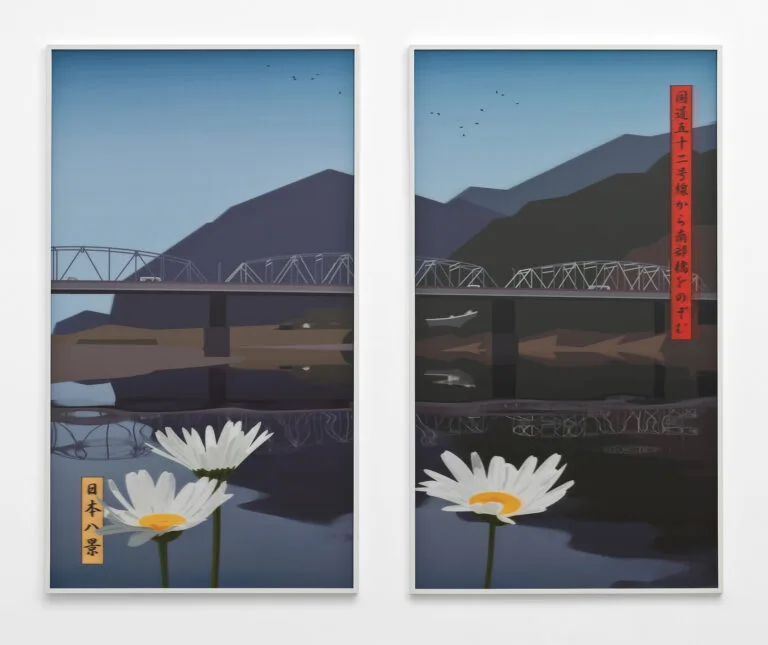
Style and Evolving Perspectives
Julian Opie delves into our perception of the world, honing in on shapes, colors, and figures that shape our visual experience. Rather than focusing on individuals directly, he fixates on the interplay of light and shadow, capturing the essence of existence and our navigation through the visual landscape.
His artistic repertoire blends traditional drawings, paintings, and cutting-edge technology. The human form takes a central role, characterized by a distinct style marked by simplicity and playfulness across animated works and portraits. For a comparison of contemporary approaches to portraiture, check out Yoshitomo Nara’s exploration of innocence and subversion in his depictions.
Notably, Opie’s figures often omit feet, akin to simplified symbols, streamlining communication. His color-blindness simplifies color, unraveling the complexity of full-color representations.
Opie’s fascination with movement as the fourth dimension is evident in works like LED figures strolling over Hungerford Bridge, showcasing his dedication to exploring dynamic elements.
A recurrent theme in Opie’s journey is the cyclical nature of his interests, grounded in real-world observations and an ongoing experimentation process. His path is marked by a dynamic interplay between success and failure, resulting in an ever-evolving body of work.
His latest works mimic commonplace signage, depicting individuals in motion, capturing the vibrant energy of a busy street. In the midst of the pandemic, Opie’s art becomes a nostalgic reflection of life before COVID, providing a sense of comfort.
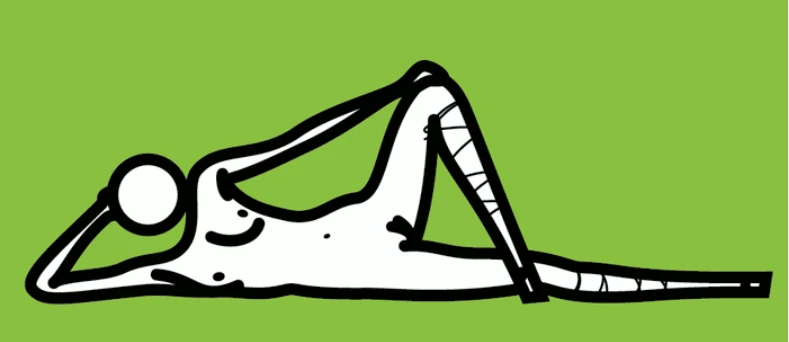
Current Influences and Inspirations
In a recent conversation, Opie shared insights into his diverse art collection, spanning from traditional Japanese prints to contemporary masterpieces. While Opie’s use of social media was mentioned, it was noted that his engagement was limited, emphasizing the platform’s role in discovering influences for his projects. Opie’s musical taste was also discussed in the interview – he highlighted his relationship with composer Max Richter and clarified the significance of music in his artistic pursuits.
Opie talks passionately about his studio, which has a cutting-edge VR system that lets him enter virtual worlds and see his works from new angles. This embrace of technological innovation showcases Opie’s commitment to utilizing cutting-edge tools to enhance his creative process.
Iconic Works
Here are the top three selected works by Julian Opie that showcase the depth and breadth of his artistic prowess, contributing to his recognition as a household name:
Best Of (2000): Opie gained widespread recognition for creating the cover for Blur’s “Best Of” album. The grid arrangement of portraits of each band member in a Warhol-esque style highlights Opie’s talent for conveying personality with minimal details. The success of this cover contributed to Opie becoming a household name.
Imagine You Are Driving (Fast)/Jacques/Helmet (2002): Part of the “Imagine You Are…” series, this work combines Opie’s fascination with landscape and minimalism. The inclusion of a portrait of Formula One driver Jacques Villeneuve adds a dynamic element to the otherwise serene depiction of an empty road, showcasing Opie’s ability to blend different themes in his art.
Shaida Walking (2015): This animated sculpture, permanently installed on London’s Carnaby Street, captures Opie’s distinctive style of reducing figures to essential lines. The use of LED display to showcase an animated walking woman in a busy shopping area reflects Opie’s interest in the universality of signs in everyday life.
Art Market Performance
Julian Opie’s are included in numerous prestigious public collections across the globe. These institutions include the National Gallery of Victoria in Melbourne, the Albertina in Vienna, the Museum of Modern Art (MoMA) in New York, and the Tate in London. Opie’s presence also extends to corporate collections, including Daimler Chrysler in Berlin, UBS Art Collection, and Deutsche Bank in Frankfurt.
Julian Opie’s sales performance over the past years reflects a strong market presence, with consistent growth in the average value of his artwork. The average value of his artwork has experienced a significant 19% growth between 2017 and 2022. Over the last 36 months, he has maintained a steady presence in the market, with an average of 75 lots sold yearly and a sell-through rate of 82.6%. This clearly indicates a consistent momentum in the market’s perception of Opie’s work.
Opie’s walking scenes stand out as among his most popular themes, attracting high prices at auctions. His ability to capture individuals in motion while exploring the balance between individuality and universality seems to resonate well with collectors. The highest price ever paid for a Julian Opie painting was £160,750 for “Walking in Sadang-Dong in the Rain,” sold at the Seoul Auction in March 2021.
Opie’s artwork has an international appeal, as seen in sales outside the UK, such as the £159,207 achieved for “Woman Posing in Underwear 1” at Christie’s in New York. This suggests a broadening market for Opie’s work beyond his home country.

The Oppie Effect
Opie’s art from the 1980s and 1990s diverged from the prevailing trends of Minimalism and Conceptual art that had dominated sculpture in the 1970s. Ironically, despite this departure, Opie has gained international acclaim primarily for his minimalist approach to portraiture. Through the reduction of an individual’s appearance to a few bold lines, strategically placed dots, and perhaps a couple of additional defining features, Opie has essentially pioneered a style of portraiture where subjects are distilled into recognizable “logos” of themselves.
Opie’s style has evolved into a distinctive trademark. His minimalist aesthetic serves as a potent catalyst for a genuine exploration of our inner realities—an escape from the artifice of the daily reality we confront, allowing us to better navigate the accelerated, advertising-saturated culture in which we are all, for better or worse, immersed.
Julian Opie’s legacy is one marked by a dynamic interplay of artistic mediums and an enduring commitment to exploring the realms of human expression. His ability to seamlessly combine minimalism with Pop Art continues to captivate art enthusiasts.

